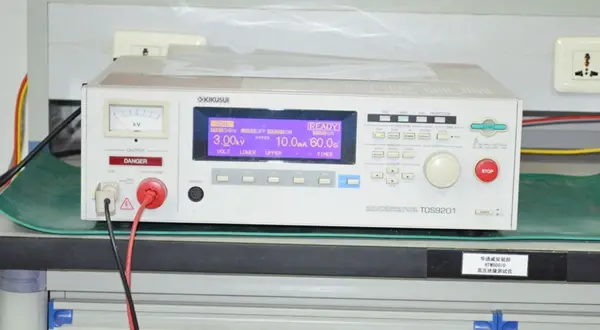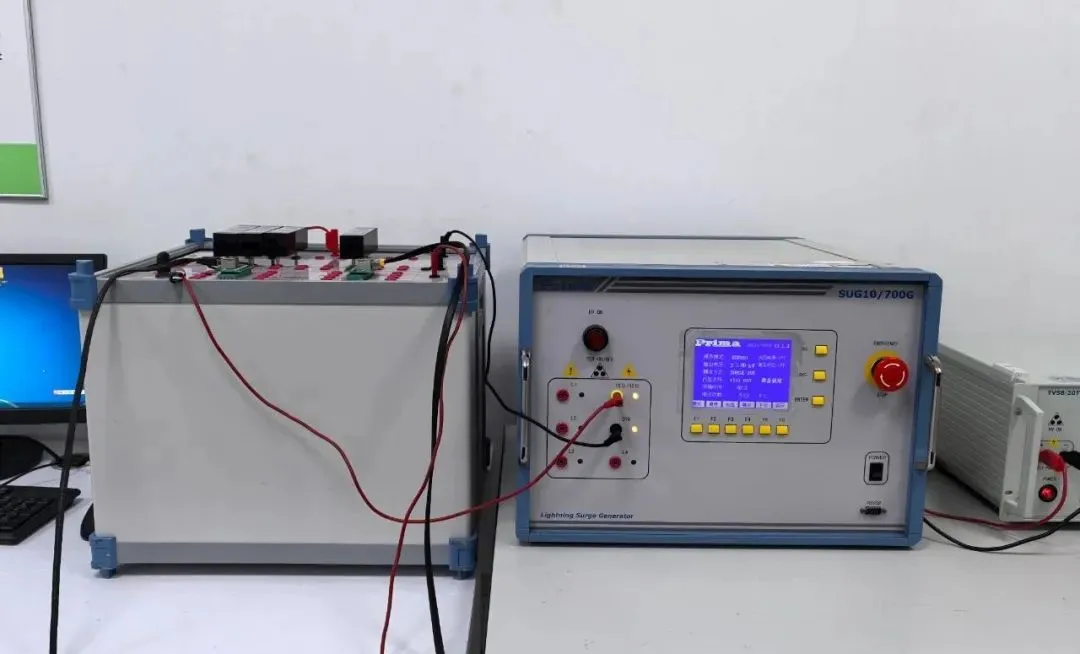
IP56/IP67/IP68 Waterproof and Dustproof Rating Tests
In the selection and use of outdoor electronic devices, consumer electronics, and industrial instruments, the "IP rating" is a key indicator to measure a device's ability to withstand dust and humid environments. Among them, IP56, IP67, and IP68 are the three most common protection levels on the market, widely used in products such as surveillance cameras, smartphones, and outdoor speakers. However, most people still have misunderstandings about their specific test requirements, protection boundaries, and applicable scenarios. This article will conduct an in-depth analysis of these three IP protection levels from four dimensions: rating definition, test standards, application scenarios, and precautions, helping enterprises and consumers accurately match product needs.

01 Basic Understanding of IP Ratings: Coding RULes and Core Significance
The IP (Ingress Protection) Rating is formulated by the International Electrotechnical Commission (IEC). Through the coding format of "IP + two digits", it clearly defines a device's protection ability against "solid foreign objects (such as dust)" and "liquids (such as water)":
① First digit: Represents the dustproof level (0-6, higher numbers indicate stronger protection). It mainly measures the device's ability to prevent the intrusion of solid foreign objects, especially focusing on the impact of dust on the normal operation of internal components.
② Second digit: Represents the waterproof level (0-9, higher numbers indicate stronger protection). It evaluates the device's waterproof performance by simulating different water flow scenarios (such as splashing, spraying, immersion).
③ Note: The IP rating only covers "dustproof" and "waterproof" capabilities. It does not include other environmental resistances such as shockproof, corrosion resistance, or high-temperature resistance, and cannot be equated with all indicators of "device durability".
02 IP56: The "Basic Protection Model" for Dust and Humid Environments
IP56 is a protection level that balances dustproof and medium waterproof capabilities. It is commonly used in devices with basic requirements for environmental adaptability but no need for extreme protection. Its core test standards and protection capabilities are as follows:
(1) Rating Definition and Test Requirements
① Dustproof level (first digit "5") test standard: Place the device in a closed test chamber containing dust, and continuously pass talcum powder of a specified concentration for 8 hours (to simulate dusty environments in reality). After the test, check if there is dust intrusion inside the device and ensure that the dust does not affect the normal operation of the device (such as no short circuit in the circuit and no jamming of mechanical parts).
② Core protection effect: Completely prevent dust from entering the device. Even if a small amount of dust enters, it will not cause any impact on the device's functions.
③ Waterproof level (second digit "6") test standard: Use a nozzle with an inner diameter of 12.5mm to strongly spray the device from any direction at a distance of 2.5-3 meters, with a flow rate of 100 liters per minute and a pressure of 30kPa (simulating heavy rain or high-pressure water gun flushing scenarios). The spraying time shall not be less than 3 minutes. After the test, confirm that there is no water ingress inside the device and all functions are normal.
④ Core protection effect: Resist high-intensity jet water flow, and can cope with scenarios such as outdoor heavy rain and high-pressure flushing in industrial environments, preventing water from entering the device.
(2) Typical Application Scenarios
Due to its balanced dustproof and strong jet resistance, IP56 is mainly used in devices that "need frequent contact with dust or may encounter strong water flow":
① Outdoor security equipment: Such as road surveillance cameras and community outdoor monitors (needing to resist sandstorms and heavy rain washing).
② Industrial instruments: Such as sensors and control panels in workshops (needing to prevent dust during production and water intrusion during high-pressure water gun cleaning).
③ Durable consumer electronics: Such as outdoor Bluetooth speakers and portable projectors (suitable for camping, outdoor activities, etc., and can cope with sudden rain and sand dust).
03 IP67: The "Universal Protection Model" with Full Dustproof and Short-Term Immersion Resistance
IP67 is a protection level with maximum dustproof (highest level) and upgraded waterproof capabilities. It can completely isolate dust and cope with short-term immersion, making it the "mainstream choice" for consumer electronics and outdoor equipment currently. Its test standards and protection boundaries are as follows:
(1) Rating Definition and Test Requirements
① Dustproof level (first digit "6") test standard: Place the device in a test chamber filled with talcum powder and maintain dust circulation for 24 hours (simulating extreme dusty environments). After the test, there shall be no dust intrusion inside the device and all components shall work normally.
② Core protection effect: Maximum dustproof capability. Even in high-frequency dusty environments such as deserts and construction sites, it can completely prevent dust from entering the device, avoiding component wear or short circuits.
③ Waterproof level (second digit "7") test standard: Fully immerse the device in 1 meter deep clean water for 30 minutes. During this period, the device shall be in a non-operating state (some special devices can support immersion in operating state, but additional labeling is requiRED). After the test, confirm that there is no trace of water ingress inside the device and it functions normally after being turned on (such as normal screen display, key response, and circuit connection).
④ Core protection effect: Cope with short-term accidental immersion, and can withstand daily splashing, rain, and accidental dropping into shallow puddles or basins. However, the boundary conditions of "1 meter water depth and 30 minutes" must be strictly followed.
(2) Typical Application Scenarios and Precautions
Due to its versatility of "full dustproof and short-term immersion protection", IP67 is widely used in various scenarios:
① Consumer electronics: Such as mid-to-low-end smartphones and smart bracelets (can cope with water splashes during hand washing and rain when forgetting to bring an umbrella).
② Outdoor equipment: Such as portable power banks and outdoor LED lights (suitable for hiking, picnics, and other scenarios, and can be used normally after being briefly dropped into streams or puddles).
③ Automotive electronics: Such as car navigation systems and reversing image cameras (can resist water flow during car washing and dust in the engine compartment).
④ Important precautions:
⑤ IP67 does not support long-term immersion scenarios such as "swimming and diving", nor can it be used in non-clean water environments such as seawater and sewage (corrosive liquids may damage the device's sealing structure).
⑥ After the device undergoes immersion testing or accidental immersion, wipe the surface moisture in a timely manner. If abnormalities occur (such as screen fogging or unresponsive keys), stop using it immediately and inspect and repair it to avoid secondary damage.
04 IP68: The "High-End Protection Model" with Full Dustproof and Deep Immersion Resistance
IP68 is the "high-level certification" among IP protection levels. On the basis of full dustproof capability, it further improves the waterproof depth and duration. It is mainly used in mid-to-high-end products with strict requirements for protection performance. Its test standards and application scenarios are as follows:
(1) Rating Definition and Test Requirements
① The dustproof level (first digit "6") has the same test standard as IP67: After a 24-hour dust circulation test, there is no dust intrusion inside the device to ensure normal operation in extreme dusty environments, achieving the highest dustproof capability.
② Waterproof level (second digit "8") test standard: Compared with IP67, IP68 has stricter immersion conditions. However, it should be noted that there is no unified international standard for the specific immersion parameters of IP68. They are determined through negotiation between device manufacturers and testing institutions. The common standard is "soaking in 1.5 meters deep clean water for more than 30 minutes", and some high-end devices can support "3 meters water depth and 1 hour soaking" (which must be clearly marked in the product manual). After the test, the device shall have no water ingress and fully normal functions. For some precision devices, internal humidity detection is also required (to ensure no moisture residue).
③ Core protection effect: Cope with deep short-term immersion, with better protection capability than IP67. However, the "water depth and duration" boundaries marked by the manufacturer must still be followed.
(2) Typical Application Scenarios and Precautions
IP68 is mainly used in mid-to-high-end products with "high-level requirements for waterproof performance":
① Consumer electronics: Such as flagship smartphones (such as iPhone Pro series and Huawei Mate series) and high-end smart watches (such as Apple Watch Ultra). They can cope with shallow water immersion during swimming (need to confirm whether the manufacturer clearly marks "swimming support") and seawater splashes during seaside play (but cannot be soaked in seawater for a long time).
② Professional outdoor equipment: Such as diving flashlights and underwater cameras (need to meet the depth requirements marked by the manufacturer, and some can support shallow water shooting within 10 meters).
③ Industrial-grade equipment: Such as underwater sensors and marine monitoring instruments (need customized IP68 solutions to meet the immersion requirements of specific depths and durations).
④ Important precautions:
⑤ Even IP68 devices do not mean "completely waterproof". Long-term immersion (exceeding the duration marked by the manufacturer), high-pressure water flow impact (such as close-range flushing with a high-pressure water gun), and non-clean water environments (seawater, disinfectant, oil stains) may still damage the sealing structure and cause water ingress.
⑥ The IP68 protection performance of the device will degrade over time (such as aging of sealant and wear of interfaces). It is recommended to regularly check the device's sealing status (such as whether the mobile phone's charging port and watch crown are damaged) to avoid water ingress due to reduced protection performance.
Selection Suggestions
① If the product is used in scenarios with "dust but no immersion risk" (such as workshop instruments), IP56 is preferred.
② If the product needs to balance "daily splashing, short-term immersion, and dustproof protection" (such as ordinary smartphones and outdoor power banks), IP67 is a cost-effective choice.
③ If the product requires "deep short-term immersion" (such as flagship mobile phones and diving flashlights) and the budget is sufficient, IP68 can be selected. However, the immersion parameters marked by the manufacturer must be strictly verified.
Although IP56, IP67, and IP68 are all common protection levels, there are significant differences in their protection boundaries and applicable scenarios. They cannot be simply judged by "the higher the number, the better". For enterprises, it is necessary to select the appropriate IP level for testing and certification according to product positioning and target scenarios (it is recommended to entrust laboratories with CNAS qualifications, such as China JJR Laboratory, to ensure the compliance and effectiveness of test results). For consumers, it is necessary to carefully read the IP rating labeling in the product manual to avoid device damage due to misunderstanding of protection capabilities.
Email:hello@jjrlab.com
Write your message here and send it to us
 How to get EN 62368-1 Test Report
How to get EN 62368-1 Test Report
 EN 300 328 Bluetooth Test Report
EN 300 328 Bluetooth Test Report
 How to get the EN 300328 Test Report?
How to get the EN 300328 Test Report?
 In-depth Interpretation of SAA Certification Q&
In-depth Interpretation of SAA Certification Q&
 Differences Between EN71 and CPC for Children's To
Differences Between EN71 and CPC for Children's To
 IP56/IP67/IP68 Waterproof and Dustproof Rating Tes
IP56/IP67/IP68 Waterproof and Dustproof Rating Tes
 CPC Certification Requirements
CPC Certification Requirements
 Amazon Electric Kettle Certification UL1082 Test
Amazon Electric Kettle Certification UL1082 Test
Leave us a message
24-hour online customer service at any time to respond, so that you worry!




